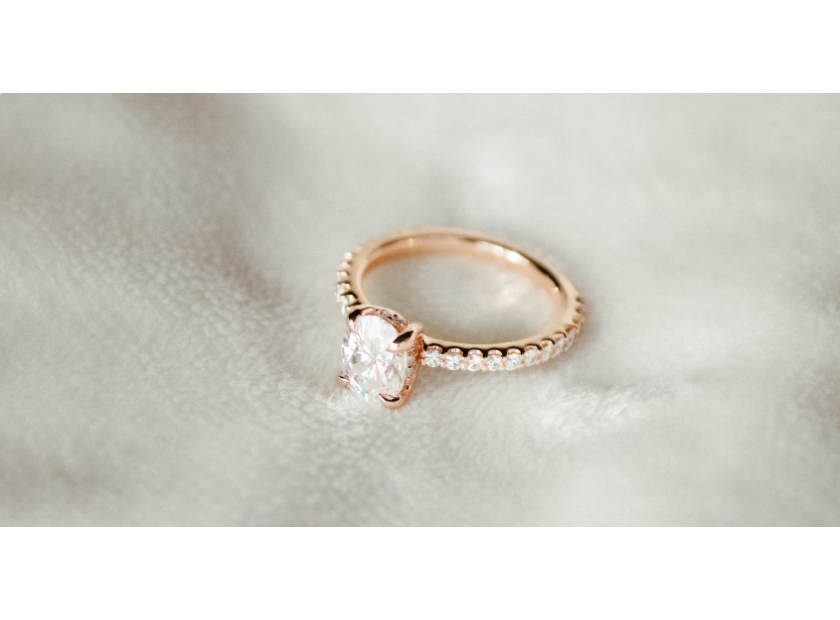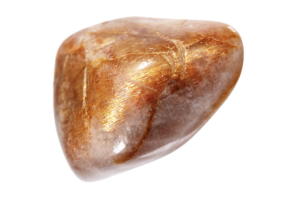USD
/
USD
/
Shipping to:
Currency:
Lab-grown diamonds are shaking up the jewelry world, offering a fresh, sustainable, and ethical alternative to traditionally mined stones. As more couples and jewelry enthusiasts shift toward eco-friendly, cost-effective options, lab-grown diamonds are quickly becoming a top choice for engagement rings, wedding bands, and everyday jewelry. In this guide, we’ll explore what makes lab-grown diamonds so special, why they’re gaining popularity, and how they’re set to shape the future of jewelry.
What Are Lab-Grown Diamonds?
Lab-grown diamonds are exactly what they sound like: diamonds grown in a lab, replicating the natural process that forms diamonds deep within the Earth’s crust. Scientists use either High Pressure-High Temperature (HPHT) or Chemical Vapor Deposition (CVD) methods to create these gems. While these processes happen in controlled environments, the result is the same: a pure carbon crystal with the same physical, chemical, and optical properties as a mined diamond.
In terms of appearance, lab-grown diamonds are virtually identical to mined diamonds, down to their sparkle, brilliance, and durability. And they’re 100% real diamonds, not imitations or “fake” stones like cubic zirconia or moissanite. With advancements in technology, even trained gemologists often need specialized equipment to tell the difference. If you’re curious about exploring lab-grown diamonds further, check out our selection of lab-grown diamonds to learn more about the range of options available.
The Rise of Lab-Grown Diamonds in Jewelry
The jewelry market is seeing a significant shift, with consumers actively seeking alternatives to traditional diamonds. Today’s buyers value transparency, environmental impact, and ethical sourcing—and lab-grown diamonds check all these boxes. As people become more aware of their personal carbon footprint and the ethical implications of their purchases, lab-grown diamonds offer a compelling, guilt-free option that aligns with a more conscious lifestyle.
Not only do lab-grown diamonds appeal to engagement ring shoppers, but they’re also gaining traction in other types of jewelry. From classic diamond studs to custom-designed pendants, lab-grown diamonds bring high quality at a lower price, making fine jewelry accessible to a broader audience.
Lab-Grown Diamonds in Engagement Rings
Choosing a lab-grown diamond for an engagement ring is becoming an increasingly popular option for modern couples. These diamonds offer a beautiful and meaningful way to make a commitment without the high costs or ethical concerns that can accompany mined diamonds. With a lab-grown diamond, couples can often afford a larger or higher-quality stone, making it possible to customize rings in ways that would otherwise be out of reach.
As lab-grown diamonds continue to make waves, engagement ring trends are evolving to showcase their versatility. From classic round diamonds to unique shapes like cushion-cut diamonds and princess-cut diamonds, lab-grown diamonds complement a variety of styles, giving couples endless options to express their love uniquely.
Benefits of Lab-Grown Diamonds
Lab-grown diamonds offer numerous advantages, from their environmental impact to their price point. Here’s a closer look at some of the biggest benefits of choosing a lab-grown diamond:
- Environmental Impact: Mining for natural diamonds involves significant environmental disruption. In contrast, growing diamonds in a lab reduces the impact on ecosystems, water usage, and land. While there is still some energy use involved, many lab-grown diamond facilities are working to integrate renewable energy sources, making lab-grown diamonds a more sustainable option.
- Ethical Sourcing: Lab-grown diamonds are free from the ethical concerns associated with conflict or "blood diamonds." They offer a transparent, traceable origin, giving peace of mind to buyers concerned about human rights issues in the mining industry.
- Cost Efficiency: Lab-grown diamonds typically cost 30-40% less than mined diamonds of similar quality, allowing buyers to invest in larger stones or save money for other meaningful experiences, like a memorable honeymoon or a new home.
- Customizability: Since lab-grown diamonds can be produced on demand, it’s easier to find unique shapes, sizes, and colors that may be harder to source in the natural diamond market. From fancy colored diamonds to perfectly matched stones for custom settings, the options are nearly limitless.
Are Lab-Grown Diamonds Here to Stay?
The future of lab-grown diamonds looks bright. Market studies indicate a steady increase in consumer demand, with projections that lab-grown diamonds will continue to gain market share in the jewelry industry. As more people become aware of the benefits—both personal and global—of choosing lab-grown diamonds, the industry is responding with innovation, investment, and a wider selection of designs.
Major jewelry brands and independent jewelers alike are expanding their offerings to include lab-grown options, with some stores even offering exclusively lab-grown diamond collections. From engagement rings to everyday wear, lab-grown diamonds are proving to be a lasting trend that resonates with the values and aesthetics of today’s consumers.
Comparing Lab-Grown and Natural Diamonds: Pros and Cons
While lab-grown and natural diamonds are virtually indistinguishable to the naked eye, there are a few factors that set them apart:
- Visual Comparison: Lab-grown and natural diamonds look identical in terms of clarity, color, and brilliance. However, lab-grown diamonds can be created with near-perfect characteristics, making high-quality options more accessible.
- Price: Lab-grown diamonds are more affordable, offering the same beauty and durability at a fraction of the cost of natural diamonds.
- Longevity: Both lab-grown and natural diamonds are incredibly durable and will last a lifetime. However, resale value for lab-grown diamonds is generally lower than for natural diamonds due to the latter’s rarity. This may not matter to some, but it’s a consideration for those interested in long-term investment.
Lab-Grown Diamonds and Ethical Jewelry Trends
In today’s world, consumers are more mindful of the environmental and social impact of their purchases, and the jewelry industry is no exception. Lab-grown diamonds align perfectly with the movement toward ethical and sustainable fashion, fitting into the broader trend of eco-conscious consumerism.
Lab-grown diamonds are part of a larger shift in the jewelry industry toward ethical practices. Alongside recycled metals and sustainably sourced gemstones, lab-grown diamonds offer a responsible option for buyers who want their jewelry to reflect their values.
Popular Styles and Settings for Lab-Grown Diamond Engagement Rings
With lab-grown diamonds, you’ll find an array of styles and settings that highlight the stone’s beauty and the wearer’s personality. Some of the most popular settings include:
- Halo: A circle of smaller diamonds around the center stone for added sparkle and size.
- Solitaire: A classic single-stone setting that lets the diamond shine on its own.
- Vintage-Inspired: Designs that reflect antique styles with intricate details and unique shapes.
- Modern Cuts: Bold, geometric cuts like emerald, radiant, and asscher that add a contemporary flair to the ring.
The Future of Jewelry with Lab-Grown Diamonds
The jewelry industry’s future is bright with lab-grown diamonds at the forefront. As technology advances, the ability to create diamonds with unique qualities—such as colored lab-grown diamonds and custom shapes—offers endless opportunities for creativity. Jewelers are embracing lab-grown diamonds in new ways, from high fashion to bespoke designs, making them a cornerstone of the future of fine jewelry.
How to Choose a Lab-Grown Diamond for Your Jewelry
When selecting a lab-grown diamond, consider the same “4Cs” used to evaluate natural diamonds: cut, color, clarity, and carat. Look for a diamond with a high-quality cut to ensure maximum sparkle, and choose a reputable jeweler who provides certification to confirm the stone’s quality.
If you’re working within a budget, prioritize the qualities that matter most to you. For example, if size is more important than perfect clarity, you can find a larger stone with slightly lower clarity that still looks stunning. Lab-grown diamonds make it possible to find a beautiful gem that aligns with your personal preferences and values.
FAQs About Lab-Grown Diamonds
Are lab-grown diamonds real diamonds?
Yes, lab-grown diamonds are real diamonds with the same chemical composition, structure, and sparkle as mined diamonds. They’re created in a lab but are not synthetic or imitation stones.
How do lab-grown diamonds compare to moissanite or other diamond alternatives?
Unlike moissanite or cubic zirconia, which are diamond simulants, lab-grown diamonds are pure carbon diamonds, just like natural diamonds. They offer a more authentic and durable option than other alternatives.
Will lab-grown diamonds hold their value over time?
While lab-grown diamonds generally have a lower resale value than natural diamonds, they’re growing in popularity and acceptance. Many buyers prioritize beauty and ethical considerations over resale value.
Can you tell the difference between lab-grown and mined diamonds?
To the naked eye, lab-grown and mined diamonds are indistinguishable. Specialized equipment is needed to detect any differences.
Are lab-grown diamonds better for the environment?
Lab-grown diamonds have a smaller environmental footprint, using less land and water and generating less waste. Many lab-grown diamond companies are also adopting renewable energy practices to reduce their impact further.








